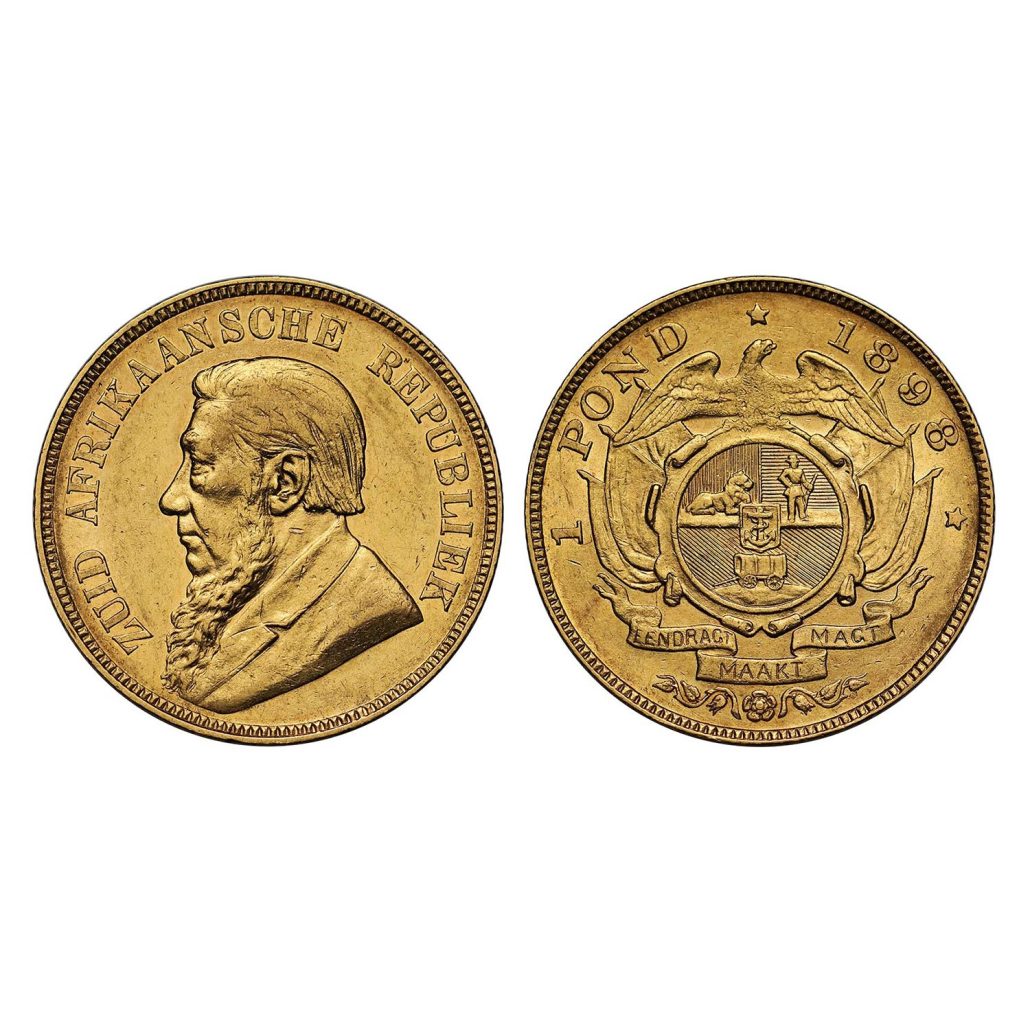The South Africa Gold Kruger Pond holds a prestigious place in numismatics, symbolizing South Africa’s rich gold reserves and its tumultuous history within the British Empire. Minted in the late 19th century, this rare coin reflects economic ambition and national identity, linked to Paul Kruger, then-president of the South African Republic. Its 22-carat gold composition and scarcity enhance its value, making it a prized collector’s item. This article delves into the Kruger Pond’s history, design, and economic and historical value. It explores why it captivates collectors and historians, from its inception amid the gold rush to its status as a symbol of the history. The Kruger Pond’s journey is rich and multifaceted, capturing the passion of numismatics enthusiasts worldwide.
The Fascinating History of the South Africa Gold Kruger Pond
Paul Kruger and the Boer Republic
The political atmosphere of the South African Republic (ZAR) was profoundly influenced by the discovery of gold in 1886. President Paul Kruger, wary of the influx of foreigners, known as ‘uitlanders’, perceived a threat to the Boer’s distinct national identity. Kruger’s administration made several attempts to control the situation, such as imposing heavy taxes on the sale of dynamite to foreigners and restricting the franchise to long-term residents. Despite these measures, tensions escalated, leading to significant historical events such as the Jameson Raid and the onset of the Second Boer War.
Impact of the Witwatersrand Gold Rush
The Witwatersrand Gold Rush was a catalyst for economic and social upheaval in South Africa. The arrival of thousands of prospectors and the establishment of Johannesburg brought wealth but also significant challenges, including civil unrest and ecological issues like Acid Mine Drainage. These developments had lasting impacts on the region, influencing its social fabric and environmental health. The gold rush not only shaped the economic landscape but also set the stage for major political conflicts, marking a pivotal chapter in South Africa’s history.
Design and Features
The South Africa Gold Kruger Pond is distinguished by its intricate design elements, crafted by the notable German medallist Otto Schultz. Schultz, renowned for his work in the late 19th century, contributed significantly to the coin’s visual appeal and historical significance.
Bust of Paul Kruger
Central to the coin’s obverse is Otto Schultz’s portrait of Paul Kruger, the then-president of the South African Republic, depicted facing left. This design not only honours Kruger’s leadership but also symbolises the assertiveness of the Boer republics during their confrontations with the British Empire. The portrait, framed by the legend “ZUID AFRIKAANSCHE REPUBLIEK,” has been a recurring motif, later adopted in the 1967 Krugerrand to signify national pride.
Symbolism in the Coin’s Imagery
The reverse of the coin features the coat of arms of the South African Republic, encapsulating a sense of unity and strength, pivotal during the era of the Boer Wars. The outer legend proudly displays “1 POND ⋆ 1898 ⋆” while the scroll below bears the Dutch motto “EENDRAGT MAAKT MAGT,” translating to “Unity Makes Strength.” Schultz’s design encapsulates the socio-political ethos of the period, making the Kruger Pond not just a monetary instrument but a symbol of national resilience and identity.
Economic and Historical Value
Impact on South African Economy
The discovery of gold in 1885, notably during the Witwatersrand Gold Rush, catalysed South Africa’s transformation from an agricultural society to a global leader in gold production. By 1892, under President Paul Kruger’s directive, the establishment of a national mint in Pretoria and the introduction of the Kruger Pond marked a significant economic upturn. This new currency, aligned with the specifications of the British Sovereign, not only bolstered the South African Republic’s economy but also positioned it as the wealthiest and most developed nation in Africa at the time.
Role in Historical Events
The economic prosperity brought by the Kruger Ponds and the gold industry had profound historical implications. It intensified the British Empire’s interest in the region, culminating in pivotal events like the Jameson Raid and the Second Boer War. These conflicts, driven by control over the lucrative goldfields, underscored the coin’s role in shaping the geopolitical landscape of Southern Africa. The cessation of the Pond’s production in 1900 and the temporary closure of the Pretoria Mint reflect the tumultuous period that followed, highlighting the coin’s significance in both economic and historical contexts.
Personal Reflections on Collecting Kruger Ponds
Collecting South Africa Gold Kruger Ponds offers a unique blend of historical allure and investment potential. These coins, minted only from 1892 to 1900, are not just rare but also embody a significant era in South Africa’s past, making them highly collectable. The decision to invest in these coins stems from their rarity and the fascinating history they represent, which resonates with collectors who appreciate both the tangible and historical value of numismatics.
Why I Chose to Invest in These Coins
The Kruger Ponds, with their low mintage figures and the historical context of the Boer Wars, present a compelling story. These factors significantly enhance their collectability and potential value increase over time. Moreover, their physical attributes, mirroring the British gold Sovereign, add a familiar yet distinct aspect to any collection, making them an attractive choice for diversifying investment portfolios.
Tips for Fellow Collectors
For enthusiasts looking to acquire these coins, it is crucial to focus on authenticity and condition. Engaging with reputable grading services like NGC ensures the coins’ authenticity, especially given the prevalence of sophisticated forgeries. Additionally, understanding the market and staying informed about the nuances of numismatics can aid in making wise purchasing decisions. Collectors should also consider the liquidity of these coins; despite their rarity, they remain in demand, offering flexibility in terms of resale and trading.
Conclusion
Through this exploration, the South Africa Gold Kruger Pond emerges not only as a cornerstone of numismatics but also as a beacon of South Africa’s rich heritage and tumultuous past. These coins encapsulate a pivotal era, marking a transition in South Africa’s economic landscape and symbolising the spirit of resistance and unity against colonial pressures. Delving into their history, design, and economic resonance, we’ve uncovered the layers that contribute to their allure and desirability amongst collectors and investors alike, highlighting their invaluable role in narrating a significant chapter of South African history.
As we consider their impact and legacy, the South Africa Gold Kruger Ponds stand as a testament to the enduring value of collecting items with profound historical significance. Their story, interwoven with the fabric of South Africa’s development and the global dynamics of the time, offers a unique lens through which we can appreciate the intricate relationship between numismatics and historical inquiry. For collectors and history enthusiasts, the Kruger Ponds serve not only as a tribute to South Africa’s numismatic heritage but also as a call to reflect on the narratives encapsulated within our collections, urging us to dive deeper into the stories that shape our understanding of the past.

